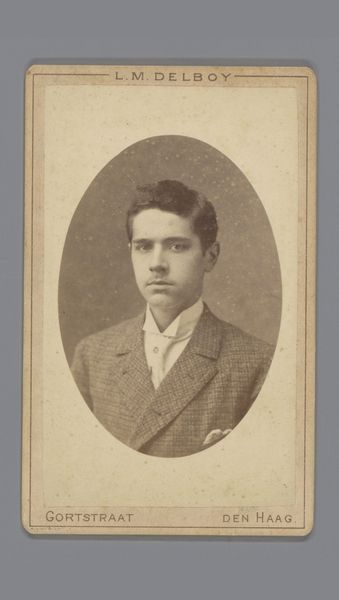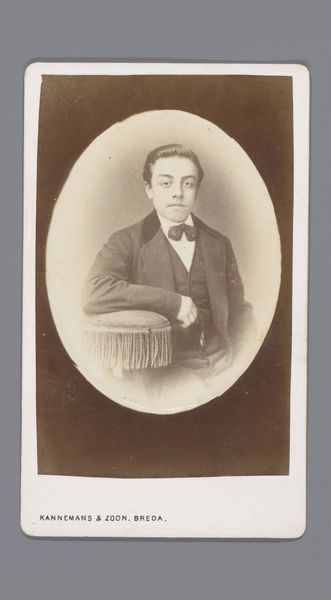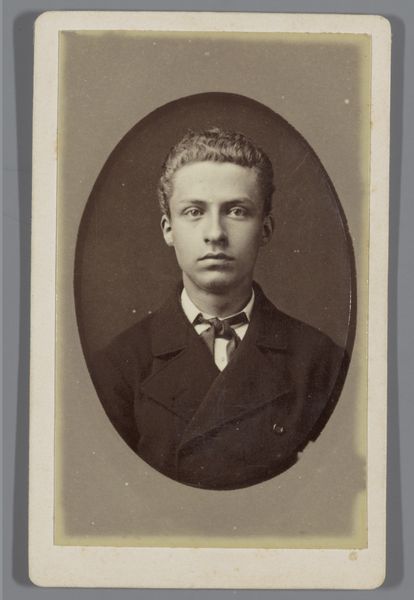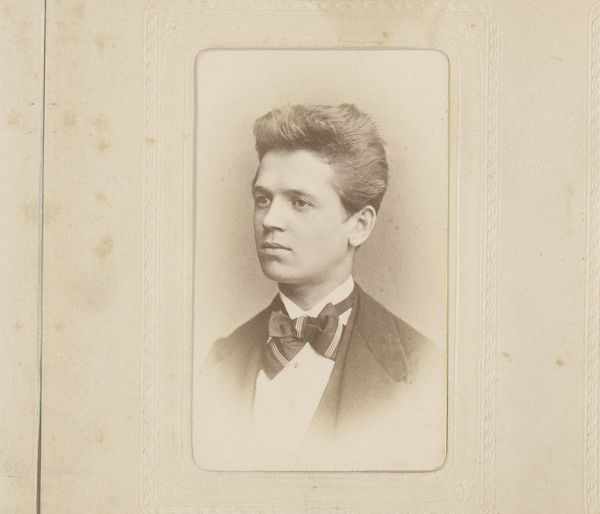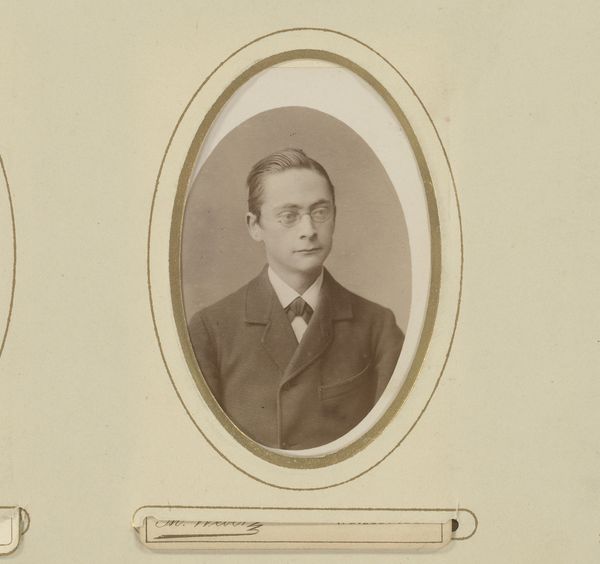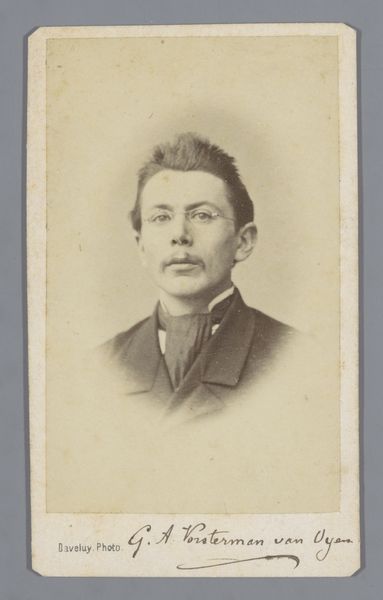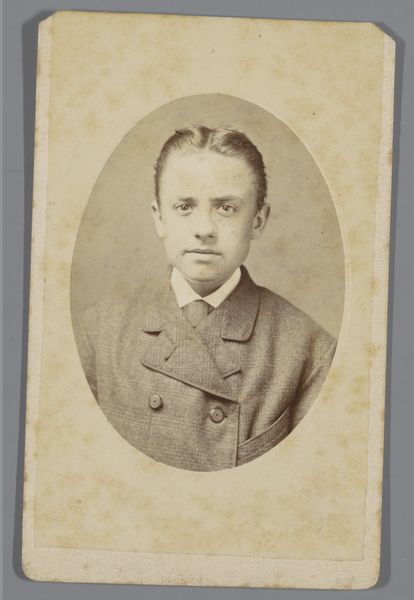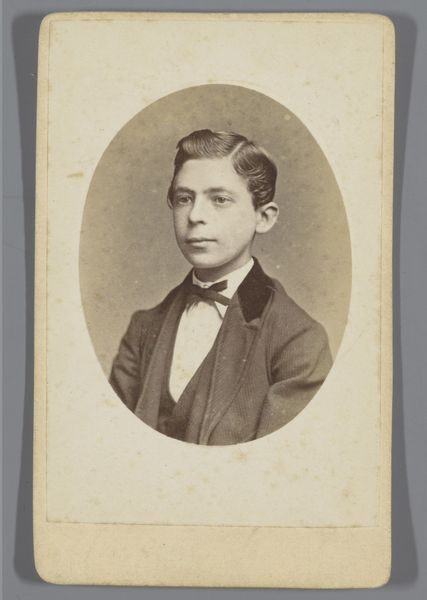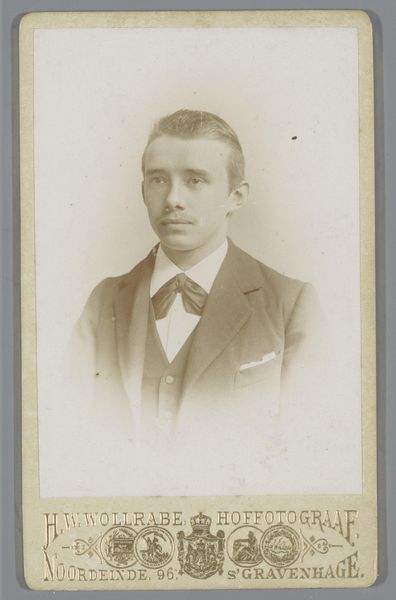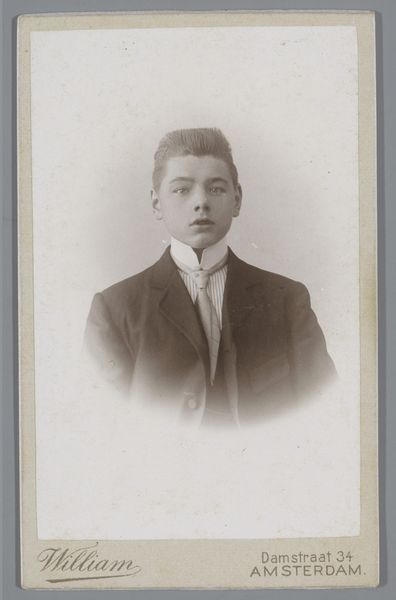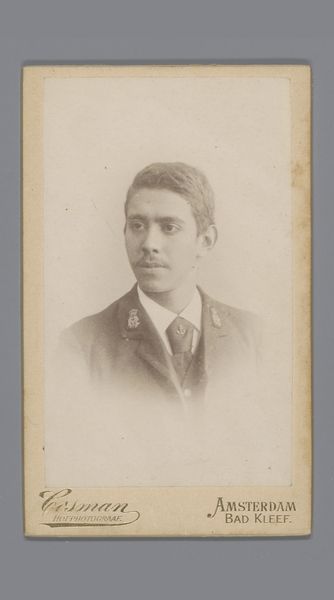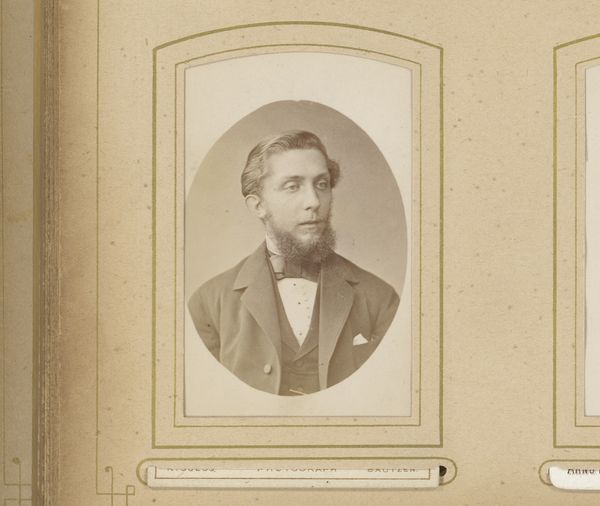
Dimensions: height 100 mm, width 61 mm
Copyright: Rijks Museum: Open Domain
Curator: This is "Portret van een onbekende man met baard" which translates to "Portrait of an unknown man with a beard." The gelatin-silver print was produced between 1881 and 1904. The studio listed at the bottom is Brainich & Leusink in Arnhem. Editor: My initial impression is somber. There's a certain gravitas about the composition—the figure fills the frame, demanding attention, yet his identity remains elusive. Curator: The lack of precise biographical data invites us to concentrate on the formal elements. The monochromatic palette—a range of subtle browns and grays—enhances the textures. Observe how the light delicately catches the subject's beard, waistcoat, and hair. Editor: But consider what this portrait *doesn't* tell us. What class does this man belong to? How might contemporary views of masculinity inform his presentation here? The portrait operates within, and is affected by, prevailing cultural biases, is it not? His very lack of specific identity transforms him into a stand-in, or marker of those social categories. Curator: Agreed. The sharp lines of the coat contrast with the softer textures of his hair and beard creating a visual dichotomy. It also speaks to the advancements in photography techniques and romantic aesthetic preferences in late 19th century Europe. Editor: These aesthetic choices are political too. Even an unidentified sitter has societal weight; the pose, clothing, the way photography itself could represent ideas about wealth, class and nationhood—those readings emerge simply by witnessing it. The lack of identification becomes as interesting as an overt description of wealth or privilege! Curator: Precisely. The gelatin silver print process allowed for finer detail than earlier photographic techniques. Editor: So, in observing these portraits we uncover some answers and prompt new inquiries. We both engage with the formal details, while also expanding the space in order to contextualize his experience of both society and art-making during the period.
Comments
No comments
Be the first to comment and join the conversation on the ultimate creative platform.
